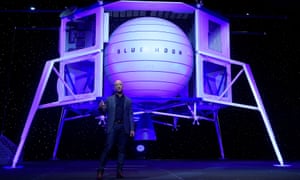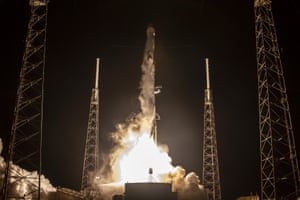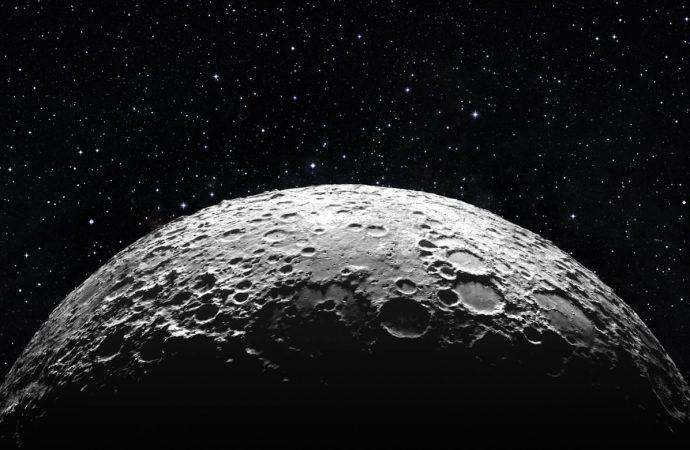With Elon Musk, Jeff Bezos, Donald Trump and others making plans, the race is on to put people back on the moon
Source: The Guardian
For Nasa employee Ryan Zeigler, the prospect of astronauts returning to the moon got real in late April. He took a call in his Houston laboratory from the space agency’s headquarters in Washington DC.
“They said: ‘So, we’re going back to the moon,’” he recounts, just days after the phone call. “I’m like: ‘Yeah, about that…’”
Along with many others at Nasa, he’s got a lot of work to do in about half the time he thought he had to do it. Unlike others, Zeigler’s job does not begin the moment the astronauts set foot on the moon, but the moment they arrive back on Earth. He is the manager of the Astromaterials Acquisition & Curation Office at Nasa’s Johnson Space Center, Houston, and is in charge of the 2,200 samples brought back from the moon by the Apollo missions half a century ago.
The phone call was to warn Zeigler that a curation plan would be needed for the new rocks, which would be arriving back on Earth in 2024 – rather than the “2028 at the earliest” that everyone was expecting.
The trouble is that the plans are at such an early stage that no one at Nasa headquarters knows exactly where the astronauts will land yet – and therefore what kind of rocks Zeigler might have to look after.
The samples collected by Apollo have told us that the moon almost certainly formed after a cataclysmic collision between Earth and another planet more than 4bn years ago, but the details remain highly elusive. They have also suggested that an intense bombardment of the planets occurred 3.9bn years ago that could have been instrumental in the development of life on Earth. However, doubts have recently been raised about this scenario. To solve both mysteries, fresh rocks from different lunar locations would be needed.
There is no guarantee Congress will grant this request. The biggest question Nasa will be asked is: why the sudden rush?
The unexpected call to arms began on 26 March, when Vice-President Mike Pence spoke following a meeting of America’s National Space Council at another Nasa centre, the Space & Rocket Center in Huntsville, Alabama. He told the gathered press that the White House had charged Nasa with getting Americans back to the moon within the next five years, almost slashing in half the previous time frame Nasa and its international partners had been working towards. A few days later a statement by the Nasa administrator Jim Bridenstine confirmed that Nasa was beginning an internal rearrangement to accelerate their programme and work towards landing astronauts somewhere close to the lunar south pole by 2024.
“I know Nasa is ready for the challenge of moving forward to the moon, this time to stay,” said Bridenstine.
For nearly a month, Nasa said little else, leaving pundits and commentators to fill the void about whether it was possible and how much it would cost.
Then, on 13 May, Nasa called a media teleconference in Washington DC with less than 90 minutes’ notice to talk about the new mission.
“It turns out that Apollo had a twin sister, Artemis. She happens to be the goddess of the moon. Our astronaut office is very diverse and highly qualified. I think it is very beautiful that 50 years after Apollo, the Artemis programme will carry the next man – and the first woman – to the moon,” said Bridenstine.
The big news, however, was that Nasa declined to state how much they would need in total to perform this mission. Instead they asked for a “downpayment” of $1.6bn in addition to their already agreed $21.5bn budget for 2020 to get things started.

There is absolutely no guarantee that Congress will grant this request. The biggest question that Nasa will be asked to answer is: why the sudden rush?
First, it is escaping no one’s notice that a landing in 2024 would coincide with the end of Trump’s possible second term in office. Second, America could just want to keep up with the rest of the world.
Keith Cowing, a former Nasa employee who now edits nasawatch.com, says: “Everyone is running in the general direction of the moon. I think there is a kind of moon fever, that’s got everybody interested.”
On 3 January this year, the Chinese landed the Chang’e 4 spacecraft on the far side of the moon, a place no one has ever been before. Their next mission is scheduled for launch at the end of this year and is designed to robotically return 2kg of moon rocks to Earth for analysis. India is planning to launch the Chandrayaan-2 mission this summer, which if successful would make them only the fourth country to land anything on the moon.
While for many years Nasa had dismissed such achievements as simply catching up with something they did decades before, now the mindset is changing, says Cowing. “Here in the US it’s like: ‘Well, wait a minute, why aren’t we going?’”
Nasa’s original plans for returning to the moon relied on a strong collaboration with the countries that came together on the International Space Station. Nasa is testing a gargantuan rocket known as the Space Launch System. Bigger than the original lunar rockets, it would propel its Orion space capsule to the moon, where it would dock with a space station in lunar orbit known as the Lunar Gateway. From here, the lunar lander would ferry astronauts to the moon’s surface.

The Lunar Gateway was to be the biggest area of collaboration but in order to meet the new time frame, Nasa proposes to “descope” the gateway, so that a smaller version can be ready in time. This largely removes the need for the international partners to accelerate their own programmes to match Nasa. Instead, there is the option for them to complete the original full version of the gateway on the original time frame to facilitate future lunar visits.
However, one place international cooperation is still critical is on the Orion crew spacecraft. While Nasa is making the crew compartment, the European Space Agency (Esa) is building almost everything else. The service module they will provide is a large cylindrical spacecraft that attaches to the crew capsule and supplies it with power and propulsion. Without this, Orion will be going nowhere.
David Parker, director of human and robotic exploration at Esa, is confident they can supply all the Orion service modules that Nasa needs as soon as it needs them. He says Esa has two service modules in various stages of completion and is setting up the construction of a third – the one that could take astronauts to the lunar surface.
“We’ve just been waiting for Nasa to say they’re ready to put boots on the moon,” says Parker.
Even if they can justify the need to race back to the moon, there is still the big question of whether Nasa will get the money. In the traditional scheme of things, Nasa contracts the big US aerospace companies such as Boeing and Lockheed Martin to make rockets and flight hardware to their specifications. As with everything bespoke, the price tag is eye-watering.
If that price proves unpalatable to Congress, Nasa could change tack and suggest buying in cheaper, commercial hardware from companies such as Elon Musk’s SpaceX and Jeff Bezos’s Blue Origin to get the job done.
By pure coincidence – if such things ever really exist – a week before the budget announcement, Bezos unveiled a mock-up of a lunar lander that Blue Origin have had in development since 2016. He said that it could be ready by 2024. “What you have here is Bezos calling Nasa’s bluff, saying, ‘Hey, over here, I can do it!’” says Cowing.

Certainly the lunar lander is the biggest mountain to climb; $1bn of the first year’s extra funding is going into jumpstarting its development. So if Congress refuses the request, the accelerated return will be dead before it has even started – unless Nasa can come up with a cheaper way of doing it, such as buying spacecraft from Bezos, whose company rather than the US taxpayer funds the development.
“In the back of my mind that’s what I think could be the game plan,” says Cowing.
Given the animosity between Trump and Bezos, enabling a crowning achievement of Trump’s time in office could be bittersweet for the Amazon founder.
It is not just American private companies that are looking to get in on the lunar action. Berlin-based PTScientists is developing a commercial lunar lander that could deliver up to 100kg of payload to the lunar surface. On 8 May it signed a memorandum of agreement with the ArianeGroup, which builds and develops the European Ariane rockets, to jointly develop lunar missions. PTScientists is also developing a separate lunar lander with Esa that would prospect the lunar south pole for water and other resources that could be used by astronauts.
And while the company has been happy so far to do the groundwork alone, it is now looking for governmental assurance that there will be a market for the products it is developing. In short, it wants to know whether Europe wants to go to the moon.
“We would like to see a political commitment that lunar exploration is important,” says Mari Eldholm, government affairs manager at PTScientists. “If Europe wants to join this effort, we really need to act now or be left behind.”

The opportunity for that commitment is coming up at the end of this year when Esa convenes a meeting of Europe’s science ministers that will effectively define its space exploration goals for the next decade.
“When I was a kid, we watched the moon landings on television. It was something America did,” says Parker. “Now the question for our ministers is: ‘Do you want to be part of it too this time?’”
To fully participate in the return to the moon, Parker plans to ask for a modest budget increase. It would be the equivalent of asking for an additional 20 euro-cents per year from everyone in Europe. It would take Esa’s space exploration budget from €550m to €660m a year.
A lot could depend on what happens in the US this summer, when the decision about whether to stump up the extra cash will be made. And it’s by no means a done deal.
“Let me tell you what I think is going to happen,” says Cowing, before describing the political row in the US over whether the island of Puerto Rico has received enough money to assist with its recovery from hurricanes Irma and Maria in 2017.
Why is this important? Because the chair of the appropriations committee that must sign off on Nasa’s extra grant money is José Serrano, who was born in Puerto Rico. So when Nasa administrator Bridenstine asks for an extra $1.6bn, “representative Serrano is going to look at him and say the lights are still out in Puerto Rico,” says Cowing.

































Leave a Comment
You must be logged in to post a comment.